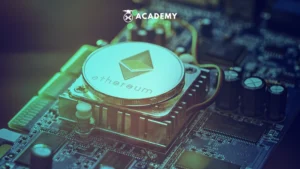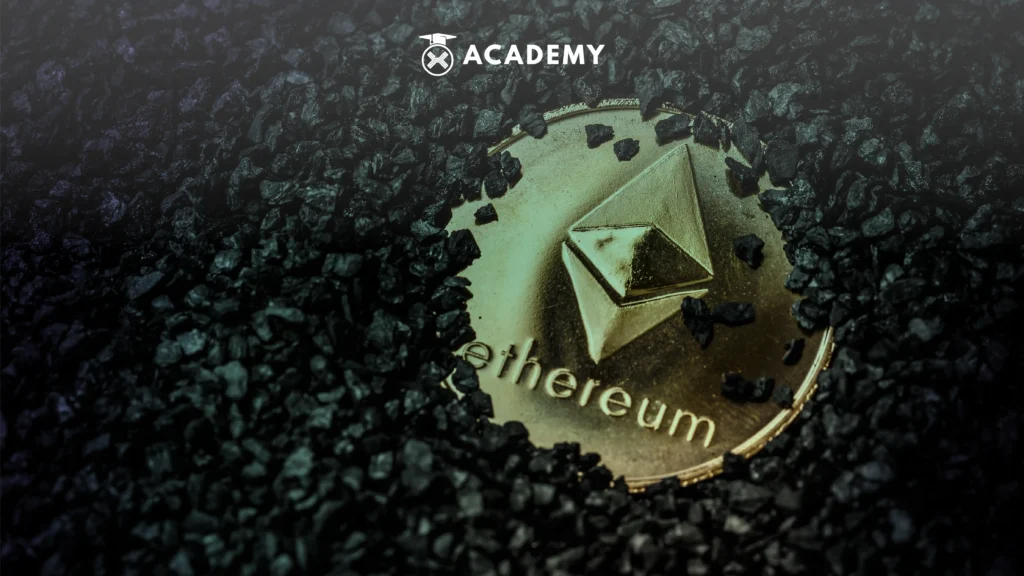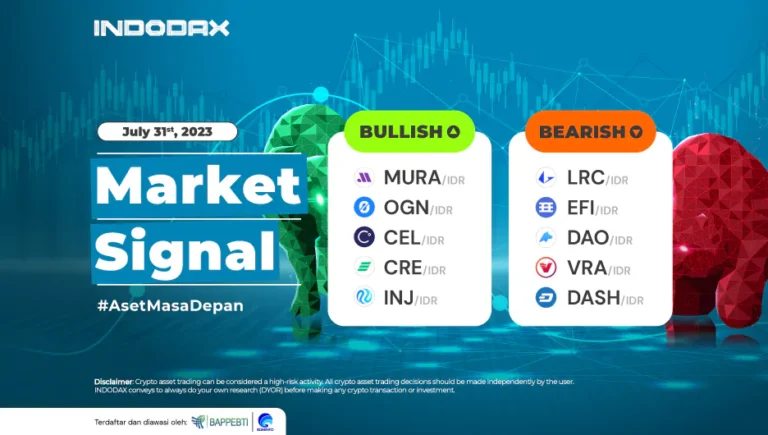One way that can be done to obtain crypto assets is crypto mining, including Ethereum mining.
Mining can be an alternative way to get digital assets apart from trading and other methods.
So, to understand Ethereum mining, the process, the steps, and the advantages and risks, let’s look at the following review.
Introduction to Mining Ethereum

Ethereum mining is a process by which miners create the latest ether coins and keep records of all digital asset transactions.
In mining, a super-sophisticated computer device is needed.
Meanwhile, the concept of mining on the Ethereum network is basically a process for creating new transaction blocks.
That block of transactions will then be added to the Ethereum blockchain network.
Therefore, it can be concluded that ETH miners have the task of processing transactions and generating blocks.
The role of mining in maintaining the security and integrity of the Ethereum network lies in the concept of miners, which is the foundation of many crypto asset networks.
The reason is these miners have spent their time and computational power to solve the math problem.
In addition, these miners also provide proof-of-work for the network that verifies Ether transactions.
The process of validating transactions carried out by miners will generate new ETH tokens through the mining process.
When a transaction validation is successful, the miner or owner of the mining tool will get a commission because the tool has been used to validate the transaction.
Crypto asset transactions, including ETH, happen on the Blockchain, and validation is done through the network.
The rewards given to miners are in the form of Ether.
These rewards become compensation for miners in an effort to secure the network, verify transactions, and create new blocks on the Ethereum blockchain network.
Ethereum Mining Process
So, how does this Ethereum mining process happen? At first, miners would solve complex mathematical problems using high computing power.
Mining works by verifying, then adding all ether transactions in a public ledger or what is known as a blockchain, aka Blockchain.
Meanwhile, the Blockchain of Ether itself is known as Ethereum.
Then, encryption and recording of transactions are carried out in blocks connected to the Ethereum blockchain.
Later, all transactions on the Ethereum blockchain network will be recorded permanently.
Therefore, miners must first complete a mathematical equation to be able to verify an Ethereum transaction.
If you succeed, the miner will be rewarded as Ethereum digital assets.
The difference between Ethereum mining and Bitcoin mining and other cryptocurrencies lies in the fundamental modifications made to the Ethereum blockchain.
This means that, despite referring to Bitcoin ideas and innovations, Ethereum blockchain developers are not copying Bitcoin technology.
This also affects the Ethereum mining process by miners.
In this case, Ethereum itself is deliberately designed to reject ASICs or special mining hardware that only facilitates efficient mining with Graphic Processing Units (GPUs) and rejects hashes from ASICs.
This method is very different from the mining process on the Bitcoin blockchain network, which is currently almost exclusively mined using ASIC.
The purpose of embedding the above restrictions into the Ethereum codebase is to provide hash power centralization limits as they exist in the Bitcoin blockchain network.
Preparation before Mining Ethereum
Before mining Ethereum, several preparations need to be made by miners, including:
1. Choose the necessary hardware for Ethereum mining, such as a powerful computer and graphics card
To get the computation process systematically together with other software in the Ethereum ecosystem, miners must choose the proper GPU to use in the mining process.
Then, the miner must install the software that will be used to mine Ethereum.
Usually, several software has been provided by the GPU. So, miners can download it from the internet.
Then, he can connect his machine to the chosen Ethereum blockchain network.
2. Choose the appropriate mining software, such as Claymore or Ethminer
After the first preparation, then the miner must choose the appropriate software for mining.
For example, miners can install the Ethminer software to benefit from the mining process later.
The Ethminer software is needed because it will function as an intermediary between miners and a group of other miners.
Note that Windows and Linux operating networks can access this software to make it easier for miners.
3. Create an Ethereum wallet account and enter the wallet address into the mining software
Finally, miners need to create an Ethereum wallet account before mining.
If so, the miner must enter the wallet address into the mining software to place the Ethereum obtained from the mining process later.
Steps to Mining Ethereum
The following are the steps in mining Ethereum that you need to know, which are as follows:
1. Install mining software and configure it by entering Ethereum wallet address
The first step that needs to be done by miners is to install mining software.
Next, miners must configure the software by entering an Ethereum wallet address.
2. Choose a mining pool that suits your needs and enter the mining pool address in the mining software
Second, miners must choose a mining pool that suits their needs.
Then, the miner will enter the mining pool address into the pre-installed mining software.
3. Start the mining process by pressing the “Start” or “Run” button on the mining software
In mining software, a “Start” or “Run” button is available, and the miner must press the button to indicate the start of the mining process.
4. Monitor mining performance and ensure hardware does not overheat or use too much electrical power
Finally, miners can monitor mining performance.
In this case, miners must also ensure that their hardware does not overheat or absorb large amounts of electricity.
Factors Influencing Ethereum Mining Results
Ethereum mining results obtained by miners will be influenced by several factors, including:
1. Mining difficulty level and the number of miners involved
The first factor that affects the results of ETH mining is the level of difficulty of the mining being carried out.
Then, the number of miners involved will also impact Ethereum mining results because mining results will be distributed later.
2. The price of Ether in the market
In addition, the price of Ether on the market will also affect Ethereum mining results, so this price fluctuation also needs to be a concern for miners.
3. Cost of electricity required to run mining hardware
Furthermore, Ethereum mining results are also affected by the cost of electricity required to run the mining hardware.
Therefore, miners should consider the cost of this electricity so that the mining results obtained can still provide a profit.
Ethereum Mining Advantages and Risks

What are the advantages and risks of the Ethereum mining process?
The potential profit from mining Ether itself depends on the costs incurred, aka capital from the miner.
Take, for example, the United States. If you want to mine 1 Ether, miners in that country must spend tens of dollars or 1 million rupiahs.
Meanwhile, the potential profit that miners can obtain reaches tens of millions of rupiah.
Even so, Ethereum mining is inseparable from the risks that lurk.
This risk, among others, is related to the cost of buying or acquiring hardware to be used for the mining process.
Then, miners must also be careful of the risk of high electricity costs for mining.
Finally, the risk of Ether price fluctuations in the market must also be a concern for miners to maintain a profit from this mining activity.
Ethereum Mining Alternatives
As it turns out, apart from mining Ethereum, there are several other alternatives, and here is a full review below:
1. Cloud Mining
The first alternative is cloud mining, a service offered by crypto mining service providers who rent out their mining capacity to users.
You don’t need to have your own hardware in cloud mining, but you can rent mining capacity from a cloud mining provider.
However, you need to know that cloud mining also has certain risks, so choosing a trusted cloud mining is a good idea.
2. Mining Ethereum using mobile devices or Io devices
You can also mine Ethereum using a mobile or Io device besides cloud mining.
Here, you will carry out the Ethereum mining process on a smartphone device using a processor such as an Application Specific Integrated Circuit (ASIC) and the like.
Then, you can later monitor the ETH mining process regularly by installing the best mining applications, for example, MinerGate next control; you also have to diligently monitor the status of the balance confirmation and the amount of mining in real-time.
Guide to Begin Mining Ethereum for Beginners
For beginners, here is a guide to starting Ethereum mining that can be done, including:
- First, you must prepare an Ethereum digital wallet (e-wallet) to store the ETH you will get.
- Second, update the GPU to the latest version. This is important to do to support good performance and mining performance. You can also review suggestions regarding this GPU update via AMD or Nvidia.
- Next, you need to install software for mining, for example, Ethminer.
- Next, determine/choose a mining method that suits your needs and capabilities: personal, cloud, or pool mining.
- Finally, you can visit the ETH mining site, which is used to get results, rewards, and profits from the mining process.
On the other hand, to minimize risks and increase profits in Ethereum mining, you need to pay attention to the following suggestions or tips, namely:
- Pay attention to the energy consumption of your hardware
- Choose the hardware that suits your needs
- Determine the right software for the mining process that you will do
- You can also join the Miner community
- Monitor Ethereum asset prices regularly to calculate potential gains and losses
Conclusion
In conclusion, Ethereum mining is a process by which miners create the latest ether coins and keep records of all digital asset transactions.
In mining, a super-sophisticated computer device is needed.
Ethereum mining is important to maintain the integrity and transparency of the blockchain network.
Meanwhile, the risks that need to be considered in mining Ethereum are hardware costs, electricity costs, and Ether price fluctuations on the market.
The factors that affect mining results include the level of mining difficulty and the number of miners involved, the price of Ether on the market, and the cost of electricity required to run the mining hardware.
The way to minimize the risk of mining Ethereum is to choose hardware that suits your needs, be careful about the risk of high electricity costs for mining by checking the device regularly, and pay attention to fluctuations in the price of Ether on the market to monitor profits.
Meanwhile, the steps involved in mining Ethereum are to:
(1) Install mining software and configure it by entering the Ethereum wallet address.
(2) Choose a mining pool that suits your needs and enter the mining pool address in the software.
(3) Start the mining process by pressing the “Start” or “Run” button on the mining software
(4) Monitor mining performance and ensure hardware does not overheat or use too much electrical power
It should also be noted before mining Ethereum or other assets such as bitcoin or litecoin mining.
Therefore, conducting thorough research and calculations regarding hardware costs, electricity costs, potential benefits, and risks associated with mining activities is important.
So, that was the complete discussion about Ethereum mining, starting from the understanding, the process, to the benefits.
You can also read other interesting articles from Rig mining to ASIC miners at INDODAX Academy.








